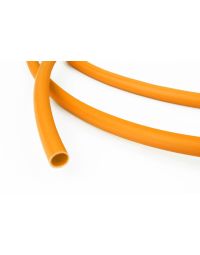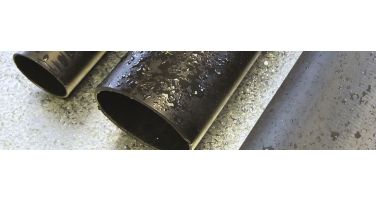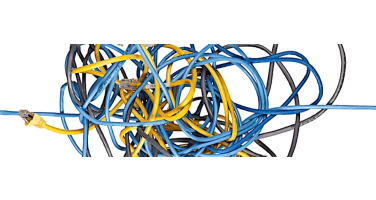Modern plastic extrusion is a high-volume manufacturing process that melts and moulds a type of plastic, known as thermoplastic, resin, into a continuous profile to build a range of different products.
Plastic extrusion is responsible for producing a diverse range of products which are then used across a range of sectors. From weatherstripping, fencing and decking to window frames, plastic sheeting and railing, extrusion is vital to creating products that we may often take for granted.
The History of Plastic Extrusion
The modern extruder dates back all the way to the early 19th century when, in 1820, Thomas Hancock invented a rubber masticator which he used to reclaim processed rubber stamps.
A few years later, in 1836, Edwin Chaffee developed a dual roller machine to mix additives into rubber.
By 1935, the first thermoplastic extrusion was developed by Paul Troester and Ashley Gershoff in Hamburg, Germany and shortly after that Roberto Colombo of LMP developed the first twin screw extruders in Italy.
Plastic Extrusion Today
In 2020, plastic extrusion is used to manufacture a range of bespoke products across a range of sectors.
One of the most common is multi-coloured or clear PVC sleeving or hosing which is used in a wealth of different cable applications. It protects cable and wiring from getting damaged if exposed to liquid, environmental attributes and hazardous materials.
Forming a protective barrier around the cable, plastic extrusion is both strong and durable but also highly flexible. It’s ideal for cabling applications, protecting exposure of the copper wire inside the cable sheath.
The Extrusion Process
In plastic extrusion, the raw compound material is commonly nodules (or small beads, often called resin.) These are gravity-fed from the top mounted hopper into the barrel of the extruder.
Additives, including colourants and UV inhibitors can be mixed into the resin prior to adding the hopper. Extrusion draws distinct similarities with plastic injection moulding as the technology used is not vastly different, although the process differs because it is typically continuous.
Through an opening near the rear of the barrel (known as the feed throat) the mixture is poured into a screw which is then rotated at a speed of normally 120 rpm. This forces the plastic beads forward into the heated barrel. Given the viscous effects, the desired extrusion temperature is rarely equal to the set temperature of the barrel.
First Stage
In most processes, a heating profile is set for the barrel in which three or more independent PID (or proportional integral derivative controller), a feedback control loop mechanism widely used in a variety of applications that require continuously modulated control, which gradually increase the temperature of the barrel from rear to front.
This allows the plastic beads to melt gradually as they’re pushed through the barrel. This also lowers the risk of overheating which may cause degradation in the polymer.
Second Stage
Extra heat is contributed by the intense pressure and friction inside the barrel. In some instances, if an extrusion line is running certain materials at a high rate of speed, the heaters are shut off and the temperature is maintained by the pressure and friction alone. Most extruders have cooling fans to keep the temperature low and cast-in cooling jackets are used to cool the molten plastic.
At the front of the barrel, the molten plastic travels through a screen pack to remove any contaminants in the melt. The screens are reinforced by a breaker plate (a thick metal puck with many holes drilled through it) as pressure at this point can exceed 5,000 psi (34 MPa).
Third Stage
Back pressure is required for uniform melting and proper mixing of the polymer, and how much pressure is generated can be "’tweaked’ by varying screen pack composition (the number of screens, their wire weave size, and other parameters).
Fourth Stage
After passing through the breaker plate molten plastic enters the die which gives the final product its profile. Any uneven flow at this stage can produce a product with unwanted residual stresses at certain points in the profile which can cause warping upon cooling. A wide variety of shapes can be created, restricted to continuous profiles.
Fifth Stage
Once this process is complete, the product is cooled by pulling the extrudate through a water bath. Plastics are very good thermal insulators and are therefore difficult to cool quickly. In a tube or pipe extrusion line, a sealed water bath is acted upon by a carefully controlled vacuum to keep the newly formed and still molten tube or pipe from collapsing.
Plastic extruders are also extensively used to reprocess recycled plastic waste or other raw materials after cleaning, sorting or blending. This material is commonly extruded into filaments that are suitable for chopping into the bead or pellet stock to use as a precursor for further processing.
If you’d like to learn more about plastic extrusion or the innovative and essential range of products that the process creates, contact Hilltop Products today.






